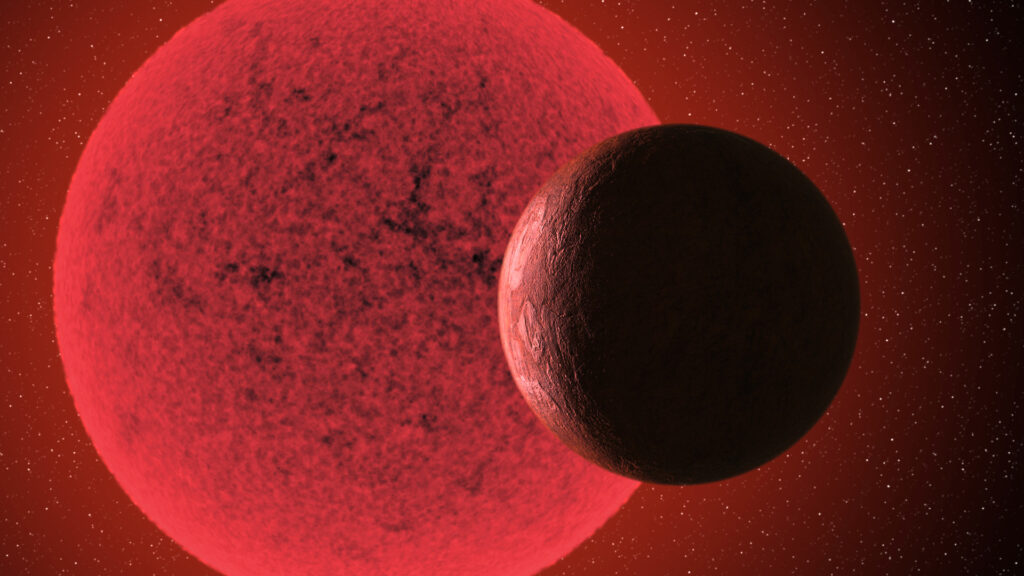Using data collected by the TESS satellite, astronomers have discovered a previously unknown exoplanet. It has an extremely short rotation period.

The found exoplanet was designated Wolf 327 b. It orbits the red dwarf Wolf 32, located 93 light-years from the Sun. The age of the star is estimated at 4.1 billion years.
As for Wolf 327 b, it is a super-Earth. Its radius exceeds the radius of the Earth by 1.24 times, and its mass is 2.53 times the mass of the Earth. This gives an average density of 7.24 g/cm3. Most likely, the exoplanet has a significant iron core surrounded by a small layer of mantle. In this respect, it may resemble Mercury.
The orbit of Wolf 327 b passes at a distance of only 0.01 AU (1.5 million km) from the surface of its parent star. It takes only 13.7 hours per orbit. The equilibrium surface temperature of the exoplanet is about 730 °C.
Such a “small” surface temperature of Wolf 327 b is explained by the fact that red dwarfs are much dimmer and colder than luminaries like our Sun. The size and mass of Wolf 327 is only 40% of the size and mass of the Sun, and the effective surface temperature is 3300 °C, which is almost half the size of the sun.
According to the researchers, there is a high probability that other bodies are orbiting this star. Exoplanets with ultrashort orbital periods are usually found in multiplanetary systems.
According to https://phys.org
Follow us on Twitter to get the most interesting space news in time
https://twitter.com/ust_magazi


